EMEA Mission Critical Wireless Communications Market Size
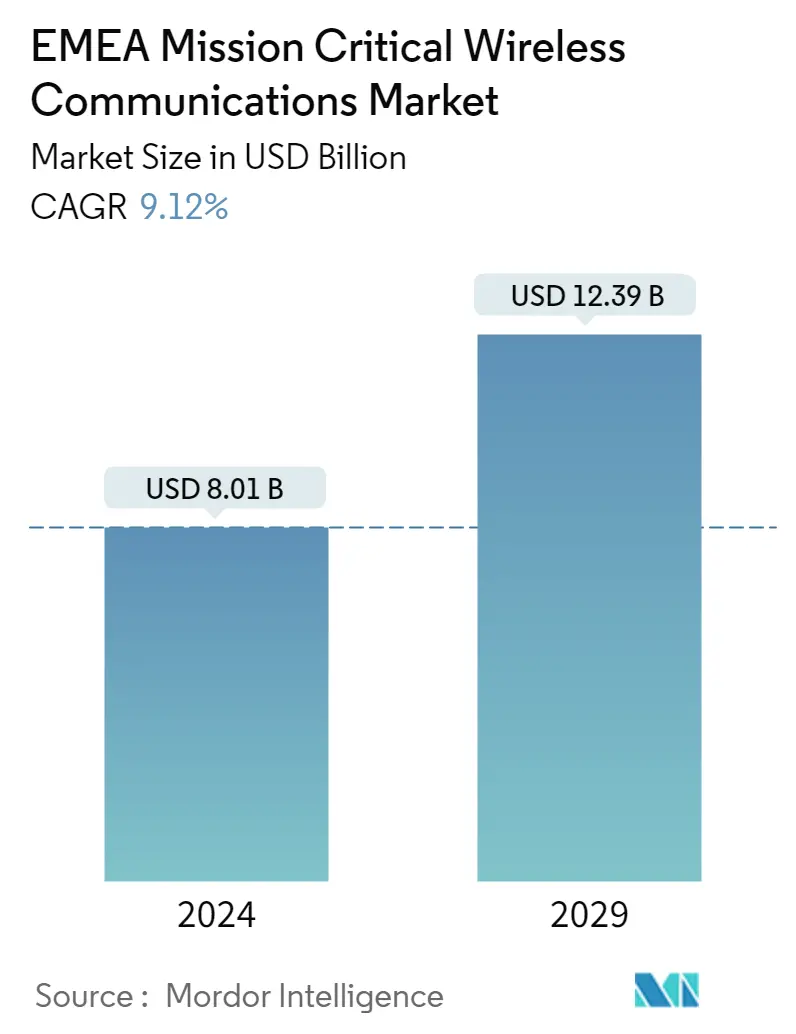
| Study Period | 2019 - 2029 |
| Base Year For Estimation | 2023 |
| Market Size (2024) | USD 8.01 Billion |
| Market Size (2029) | USD 12.39 Billion |
| CAGR (2024 - 2029) | 9.12 % |
| Market Concentration | Low |
Major Players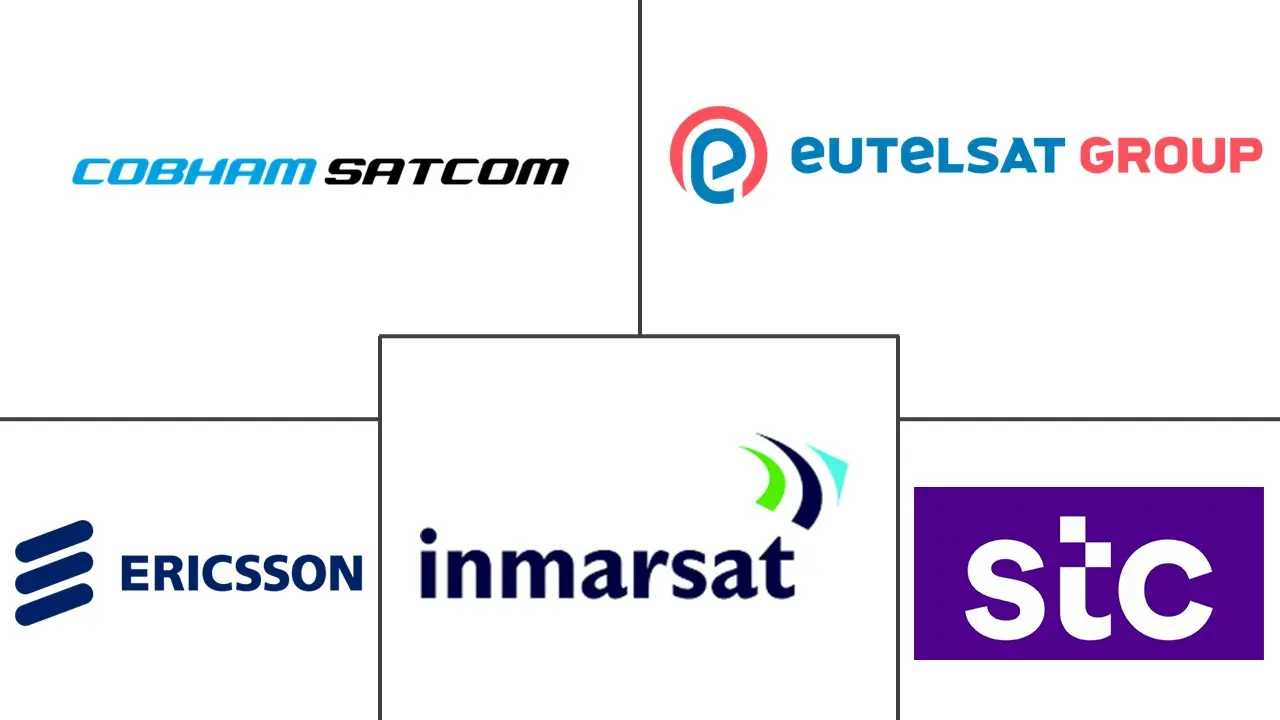
*Disclaimer: Major Players sorted in no particular order |
EMEA Mission Critical Wireless Communications Market Analysis
The EMEA Mission Critical Wireless Communications Market size is estimated at USD 8.01 billion in 2024, and is expected to reach USD 12.39 billion by 2029, growing at a CAGR of 9.12% during the forecast period (2024-2029).
The capabilities of mission-critical wireless communications in the EMEA region are anticipated to be enhanced by ongoing technological advancements in communication systems, such as the integration of 5G technology, the Internet of Things (IoT), and Artificial Intelligence (AI). Moreover, mission-critical networks are expected to significantly benefit from 5G's advancements over Push-to-Talk by integrating features like Push-to-Video, video streaming, group messaging, file sharing, and location sharing.
- The growing focus on public safety and security is a key factor responsible for the market's growth. The increasing emphasis on ensuring the safety of the public and the need for effective emergency response systems has increased the demand for advanced communication technologies across various sectors within the EMEA region. This includes the deployment of reliable and secure communication networks for critical operations in the public safety, defense, transportation, and utility sectors, addressing the imperative need for swift and coordinated responses during emergencies and critical situations.
- Additionally, the EMEA mission-critical wireless communications market is witnessing a surge in the deployment of cloud-based communication solutions. The adoption of cloud-based platforms enables organizations to achieve scalability, flexibility, and cost-effectiveness in managing and accessing critical communication data, enhancing operational efficiency and situational awareness within the region.
- Europe, comprising a diverse range of countries with advanced industrial and technological capabilities, is expected to be a significant adaptor of mission-critical wireless communications solutions. With a strong emphasis on technological innovation, regulatory compliance, and public safety initiatives, the European region serves as a primary driver for the growth and evolution of the EMEA mission-critical wireless communications market.
- Moreover, the presence of established industries, extensive transportation networks, and a strong focus on enhancing communication infrastructure further solidifies Europe's significant contribution to the overall market share within the EMEA region.
- The deployment and maintenance of wireless critical communication infrastructure and equipment involve substantial costs inherent to such systems' complexity, reliability, and security requirements. These costs are significant for organizations and agencies that rely on mission-critical wireless communication, such as public safety, defense, transportation, and industrial sectors. The initial cost of purchasing hardware, such as base stations, antennas, radios, and network components, is a substantial part of the deployment expenses. Moreover, a high maintenance cost has been associated with critical wireless communication infrastructure and equipment. This is expected to restrain the growth of the market.
EMEA Mission Critical Wireless Communications Market Trends
Oil and Gas Industry to Hold Major Share in the Commercial and Industry End User Segment
- The oil and gas industry in the EMEA region heavily relies on mission-critical wireless communications to ensure seamless operations, enhanced safety measures, and efficient production processes. Across Europe, the Middle East, and Africa, this vital sector leverages various communication technologies tailored to the specific demands of oil and gas operations, including both onshore and offshore facilities. As a result, these communication systems play a crucial role in facilitating reliable and uninterrupted communication between personnel, equipment, and control centers, thereby enhancing operational efficiency, safety protocols, and emergency response capabilities in the oil and gas sector.
- The industry's complex operations necessitate robust and reliable communication systems to ensure the safety and security of personnel, assets, and the environment. Mission-critical wireless communications enable real-time monitoring, emergency response, and efficient coordination, enhancing overall safety and security measures. By providing seamless and uninterrupted communication channels, these systems might help mitigate potential risks and ensure quick responses to critical incidents during exploration, production, or distribution processes.
- Moreover, according to the Energy Institute, the Middle East produces more substantial volumes of oil than any other region. For instance, According to Baker Hughes, the Middle East is home to some of the highest numbers of oil and gas rigs in the world. In February 2024, there were a total of 349 land rigs in that area.
- As a result, the region's prominent position as a significant oil-producing hub emphasizes the critical importance of robust communication infrastructure in the oil and gas sector. With a substantial share of the world's oil production originating from the Middle East, the need for efficient and reliable mission-critical wireless communications becomes increasingly crucial.
- In the Middle East, the oil and gas industry leverages advanced satellite communication networks, digital radio systems, and Internet of Things (IoT) technologies to support its expansive operations. These networks are designed to withstand the region's challenging environmental conditions, enabling continuous and reliable communication across remote and offshore oil production facilities.
- Across EMEA, the oil and gas sector is expected to witness a combination of satellite-based communication systems, digital two-way radio networks, and integrated IoT solutions to support its diverse operational requirements. These systems might be tailored to address various challenges of the continent's diverse geographical landscapes, enabling seamless communication and data transmission across various onshore and offshore oil exploration and production sites. The region has witnessed a growing focus on planned investments in mission-critical wireless communication infrastructure to promote operational resilience, ensure workforce safety, and optimize production efficiency within the oil and gas industry.
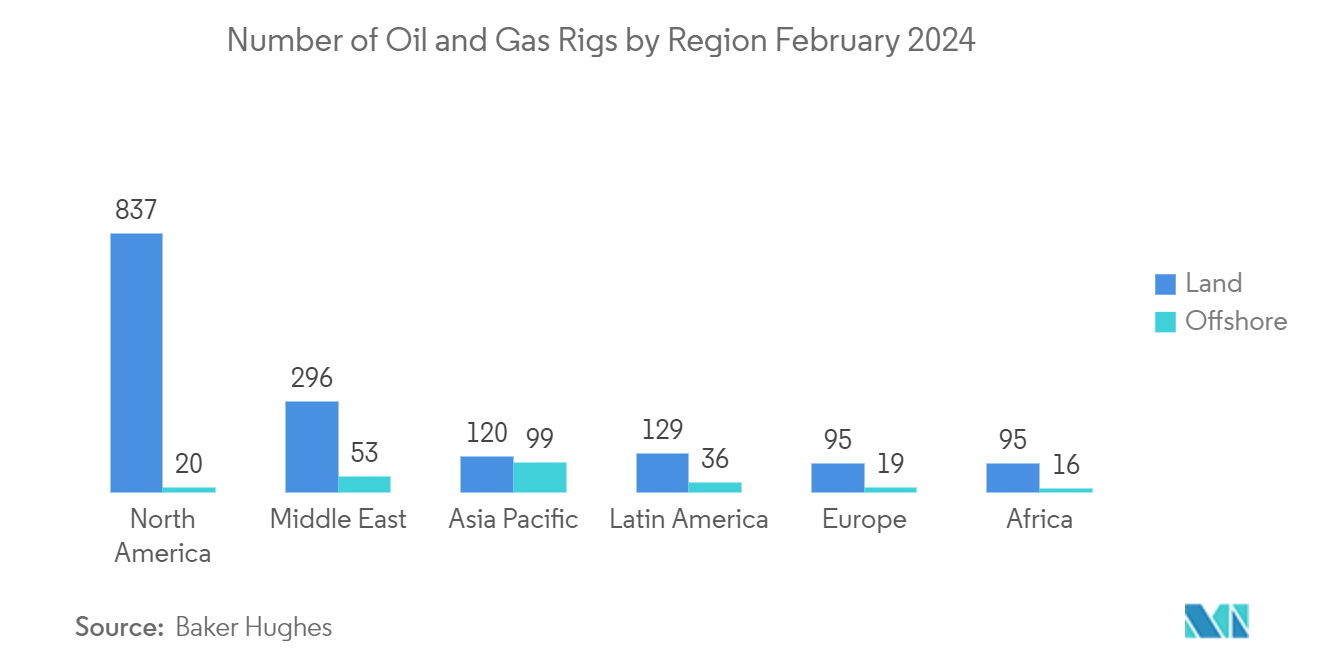
Europe is Expected to Hold Significant Market Share
- The rising adoption of digital transformation initiatives across various industries, including manufacturing, logistics, and healthcare, has led to an increased demand for mission-critical wireless communications solutions. The integration of advanced communication networks, such as TETRA, LTE, and 5G, enables seamless connectivity and real-time data transmission, thereby facilitating improved operational efficiency and situational awareness.
- In addition, according to a GSMA 2022 report, the 5G connections in Europe were recorded to be around 4% of total connections, while it is estimated that this share will reach 44% in 2025. As the region progressively transitions toward widespread 5G connectivity, the potential for enhanced communication capabilities in challenging environments becomes increasingly feasible.
- In January 2023, the UK government announced a new wireless infrastructure strategy to invest in and provide 5G connectivity to every populated area by 2030. As part of the strategy, the United Kingdom will be at the forefront of the next generation of wireless technology owing to a comprehensive 6G plan. The government established a national mission to secure the United Kingdom's place in future telecoms and 6G technologies, with up to EUR 100 million (USD 130 million) in initial funding. Such initiatives could contribute to the growth and development of the critical wireless communications market in the United Kingdom.
- The market is significantly driven by the investments in wireless technologies and support from the government funding position the United Kingdom's position as a key player in the critical wireless communications market, reflecting the country's commitment to leveraging advanced wireless technologies to enhance operational efficiency, resilience, and safety within critical infrastructure sectors.
- France has witnessed substantial investments in research and development, introducing innovative wireless communication solutions that offer enhanced security, reliability, and scalability. France's commercial and industrial sectors are increasingly integrating mission-critical wireless communication solutions to enhance their operational efficiency and ensure seamless connectivity across various sectors, such as transportation and logistics, manufacturing, and energy.
- Germany's strong focus on industrial digitalization and implementation of Industry 4.0 principles have driven the adoption of mission-critical wireless communication technologies. Industries such as manufacturing, automotive, and logistics increasingly rely on efficient and secure communication systems to optimize operations, monitor supply chains, and enhance overall productivity, thus driving the demand for advanced wireless communication solutions. The country's significant emphasis on defense and aerospace industries has also contributed to the growth of the mission-critical wireless communications market.
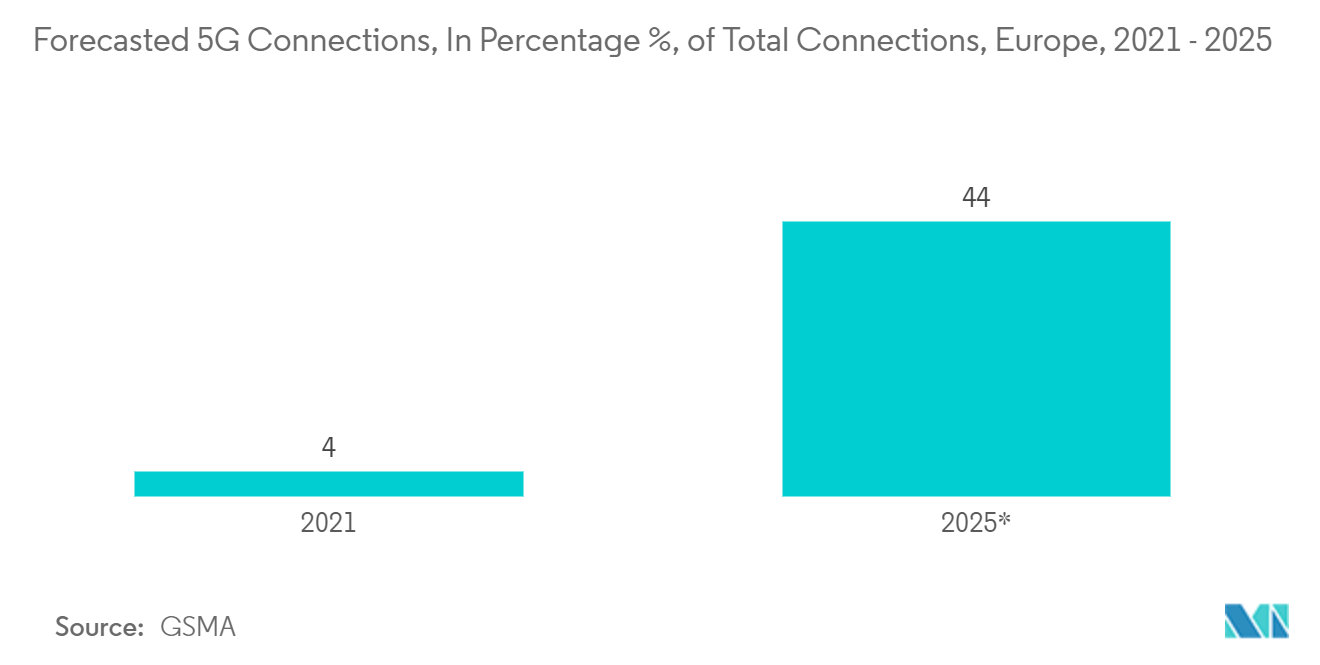
EMEA Mission Critical Wireless Communications Industry Overview
The EMEA Mission Critical Wireless Communications Market is fragmented with the presence of major players like Cobham Satcom, Inmarsat Global Limited, Eutelsat Communications SA, Telefonaktiebolaget Lm Ericson, and Saudi Telecom Company (STC). Players in the market are adopting strategies such as partnerships and acquisitions to enhance their product offerings and gain sustainable competitive advantage.
- June 2023: Vodafone Group Plc and CK Hutchison Group Telecom Holdings Limited, a wholly-owned subsidiary of CK Hutchison Holdings Limited ("CK Hutchison"), entered into binding agreements to a combination of their UK telecommunication businesses, respectively Vodafone UK and Three UK. Vodafone will own 51% of the combined business ("MergeCo") and CKHGT 49%.
- May 2023: Nokia announced new, optimized Core Network software solutions for field area network and wide area network needs of power utilities and public safety, expanding the portfolio range available to large, mission-critical enterprises and governments and reflecting the company's focus on driving continued leadership in private wireless. Nokia Core Enterprise Solutions are based on its widely deployed Core products and optimized to help organizations take advantage of secure carrier-grade capabilities and digitalize their network infrastructure to realize increased productivity, automation, and efficiency.
EMEA Mission Critical Wireless Communications Market Leaders
-
Cobham Satcom
-
Inmarsat Global Limited
-
Eutelsat Communications SA
-
Telefonaktiebolaget Lm Ericson
-
Saudi Telecom Company (STC)
*Disclaimer: Major Players sorted in no particular order
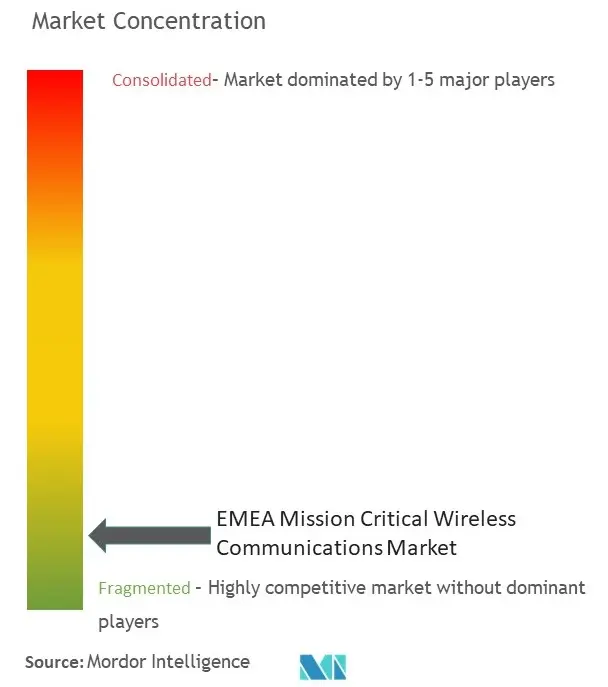
EMEA Mission Critical Wireless Communications Market News
- March 2023 - Radiocoms Systems Ltd, a communication service provider, announced that it had secured a seven-year contract with the London Fire Brigade to deploy the digital technology-based DMR radio communications system to support the 100 fire stations in London, which would increase the demand for infrastructure and ground equipment for the fire safety industries in the region. As a result, the demand for infrastructure and ground equipment is expected to witness a notable upsurge, driven by the need for innovative and robust communication solutions that can effectively address the evolving requirements of the fire safety industry and other critical mission operations within the region.
- July 2023 - The Yahsat Group, a UAE-based satellite telecom company, announced that it plans to invest more than USD 100 million on capital expenses related to the T4-NGS satellite program. The project will provide Thuraya with an advanced telecommunications system and will cost up to USD 550 million, including launch, manufacturing, insurance, and new ground infrastructure. It is expected to start operating in H1 2025. The company claims that Yahsat's five-satellite fleet provides essential communications, such as broadband, video broadcasting, backhauling, and mobile voice and data solutions, to over 80% of the world's population.
EMEA Mission Critical Wireless CommunicationsMarket Report - Table of Contents
1. INTRODUCTION
- 1.1 Study Assumptions and Market Definition
- 1.2 Scope of the Study
2. RESEARCH METHODOLOGY
3. EXECUTIVE SUMMARY
4. MARKET INSIGHTS
- 4.1 Market Overview
- 4.2 Analysis of Micro-economic Scenarios (Recession, Russia-Ukraine Crisis, etc.)
- 4.3 Assessment of the Impact of and Recovery from COVID-19 on the Market
5. MARKET DYNAMICS
-
5.1 Market Drivers
- 5.1.1 Need for High-speed, Reliable Communication Network in Remote Locations and Harsh Weather Conditions
- 5.1.2 Rising Preference for Connected Devices and Internet of Things (IoT)
- 5.1.3 Rising Safety Concerns for Enterprise Assets
-
5.2 Market Challenges
- 5.2.1 Concerns for Data Privacy and Security
- 5.2.2 Heavy Cost Associated With Deployment and Maintenance of Wireless Critical Communication Infrastructure and Equipment
- 5.3 Insights on Various Wireless Connectivity Technologies
6. MARKET SEGMENTATION
-
6.1 By Offering
- 6.1.1 Infrastructure and Ground Equipment
-
6.2 By Platform
- 6.2.1 Land
- 6.2.2 Marine
- 6.2.3 Airborne
- 6.2.4 Portable
-
6.3 By End-user Industry
- 6.3.1 Commercial and Industrial
- 6.3.1.1 Mining
- 6.3.1.2 Transportation and Logistics
- 6.3.1.3 Oil and Gas
- 6.3.1.4 Industrial
- 6.3.1.5 Earthmoving Construction
- 6.3.1.6 Others
- 6.3.2 Government
- 6.3.3 Aerospace and Defense
- 6.3.3.1 Military
- 6.3.3.2 Others
-
6.4 By Geography
- 6.4.1 Europe
- 6.4.1.1 United Kingdom
- 6.4.1.2 France
- 6.4.1.3 Germany
- 6.4.2 Middle East
- 6.4.2.1 United Arab Emirates
- 6.4.2.2 Saudi Arabia
- 6.4.3 Africa
- 6.4.3.1 South Africa
- 6.4.3.2 Nigeria
7. COMPETITIVE LANDSCAPE
-
7.1 Company Profiles*
- 7.1.1 Cobham Satcom
- 7.1.2 Inmarsat Global Limited
- 7.1.3 Eutelsat Communications SA
- 7.1.4 Telefonaktiebolaget LM Ericsson
- 7.1.5 Saudi Telecom Company (STC)
- 7.1.6 Vodafone Group PLC
- 7.1.7 Nokia Corporation
- 7.1.8 Hitachi Ltd
- 7.1.9 Sepura Limited
- 7.1.10 Simoco Wireless Solutions Limited
- 7.1.11 Motorola Solutions Inc.
- 7.1.12 Thales Group
8. MARKET OPPORTUNITIES AND FUTURE TRENDS
** Subject To AvailablityEMEA Mission Critical Wireless Communications Industry Segmentation
EMEA mission-critical wireless communications market tracks revenue generated through the sale of ground equipment along with wireless connectivity (voice and data) services provided by market vendors to various industries across Europe, the Middle East, and Africa (EMEA) region. Moreover, ground equipment comprises a complex array of interconnected systems, components, and infrastructure that work together to support critical communication and data processing.
The scope of the study considers the market segmented based on offering, platform, end-user industry, and region, along with key countries in EMEA. The study also provides the country-level market trends and key vendor profiles. The study further analyzes the overall impact of COVID-19 and its recovery on the ecosystem.
EMEA mission critical wireless communications market is segmented by offering (infrastructure and ground equipment), by platform (land, marine, airborne, and portable), by end-user industry (commercial and industrial [mining, transportation and logistics, oil and gas, industrial, earthmoving construction, and others], by government [aerospace and defense [military and others]]), and by region (Europe [United Kingdom, France, Germany, and Rest of Europe], Middle East [United Arab Emirates, Saudi Arabia, and Rest of Middle East], and Africa [South Africa, Nigeria, and Rest of Africa]). The market sizes and forecasts are provided in terms of value in USD for all the above segments.
| By Offering | Infrastructure and Ground Equipment | |
| By Platform | Land | |
| Marine | ||
| Airborne | ||
| Portable | ||
| By End-user Industry | Commercial and Industrial | Mining |
| Transportation and Logistics | ||
| Oil and Gas | ||
| Industrial | ||
| Earthmoving Construction | ||
| Others | ||
| By End-user Industry | Government | |
| Aerospace and Defense | Military | |
| Others | ||
| By Geography | Europe | United Kingdom |
| France | ||
| Germany | ||
| By Geography | Middle East | United Arab Emirates |
| Saudi Arabia | ||
| By Geography | Africa | South Africa |
| Nigeria |
EMEA Mission Critical Wireless CommunicationsMarket Research FAQs
How big is the EMEA Mission Critical Wireless Communications Market?
The EMEA Mission Critical Wireless Communications Market size is expected to reach USD 8.01 billion in 2024 and grow at a CAGR of 9.12% to reach USD 12.39 billion by 2029.
What is the current EMEA Mission Critical Wireless Communications Market size?
In 2024, the EMEA Mission Critical Wireless Communications Market size is expected to reach USD 8.01 billion.
Who are the key players in EMEA Mission Critical Wireless Communications Market?
Cobham Satcom, Inmarsat Global Limited, Eutelsat Communications SA, Telefonaktiebolaget Lm Ericson and Saudi Telecom Company (STC) are the major companies operating in the EMEA Mission Critical Wireless Communications Market.
What years does this EMEA Mission Critical Wireless Communications Market cover, and what was the market size in 2023?
In 2023, the EMEA Mission Critical Wireless Communications Market size was estimated at USD 7.28 billion. The report covers the EMEA Mission Critical Wireless Communications Market historical market size for years: 2019, 2020, 2021, 2022 and 2023. The report also forecasts the EMEA Mission Critical Wireless Communications Market size for years: 2024, 2025, 2026, 2027, 2028 and 2029.
EMEA Mission Critical Wireless CommunicationsIndustry Report
Statistics for the 2024 EMEA Mission Critical Wireless Communications market share, size and revenue growth rate, created by Mordor Intelligence™ Industry Reports. EMEA Mission Critical Wireless Communications analysis includes a market forecast outlook to for 2024 to 2029 and historical overview. Get a sample of this industry analysis as a free report PDF download.



